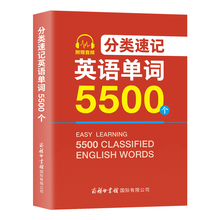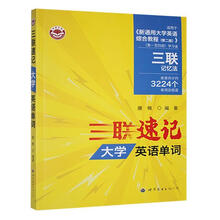Chapter 1 English as a global language
1.1 The English language today
1.1.1 English is a global language
1.1.2 Political and economical reasons
1.2 The demand for English
1.2.1 The use of English
1.2.2 The teaching of English
1.3 The future of English
Exercises
Chapter 2 Lexicology and basic concepts of words and vocabulary
2.1 The definition of English lexicology
2.1.1 The domains of English lexicology
2.1.2 Methods of studying of lexicology
2.2 The definition of word
2.3 The definition of vocabulary
2.4 Classification of words
2.4.1 Full word and form word
2.4.2 Popular word and learned word
2.4.3 Abstract word and concrete word
2.4.4 Transparent word and opaque word
2.4.5 Polysemic word and monosemic word
2.4.6 Native word and loan word
Exercises
Chapter 3 The development of the English vocabulary
3.1 The world languages
3.2 Language classifications
3.2.1 Morphological classification
3.2.2 Structural classification
3.3 Indo-European language family
3.4 The historical overview of English vocabulary
3.4.1 Old English (450-1150)
3.4.2 Middle English (1150-1500)
3.4.3 Modern English (1500 up to the present)
3.5 Three main sources of new words of the present-day English vocabulary
3.5.1 The rapid development of modern science and technology
3.5.2 Social, economic, and political changes
3.5.3 The influence of other cultures and languages
3.6 Modes of the development Of the English vocabulary
3.6.1 Creation
3.6.2 Semantic change
3.6.3 Borrowing
Exercises
Chapter 4 The structure of English words
4.1 The morphological structures of words
4.1.1 Morphemes
4.1.2 Morphs and allomorphs
4.2 Types of morphemes
4.2.1 Free morphemes
4.2.2 Bound morphemes
4.3 Root, stem and base
4.3.1 Root
4.3.2 Stem
4.3.3 Base
Exercises
Chapter 5 Word-formation in English
5.1 Affixation
5.1.1 Prefixation
5.1.2 Suffixation
5.2 Compounding
5.2.1 Noun compounds
5.2.2 Adjective compounds
5.2.3 Verb compounds
5.3 Conversion
5.3.1 Conversion to nouns
5.3.2 Conversion to verbs
5.3.3 Conversion to adjectives
5.4 Blending
5.4.1 head+tail
5.4.2 head+head
5.4.3 head+word
5.4.4 word+tail
5.5 Clipping
5.5.1 Front clipping
5.5.2 Back clipping
5.5.3 Front and back clipping
5.5.4 Phrase dipping
5.6 Acronymy
5.6.1 Initialisms
5.6.2 Acronyms
5.7 Back-formation
5.7.1 Abstract nouns
5.7.2 Human nouns
5.7.3 Compound nouns and others
5.7.4 Adjectives
Exercises
Chapter 6 Word meaning
6.1 Meaning
6.1.1 Analytical (referential) definitions of meaning
6.1.2 Operational (contextual) definitions of meaning
6.2 Meanings of meaning
6.2.1 Reference
6.2.2 Concept
6.2.3 Sense
6.3 Types of motivation
6.3.1 Onomatopoeic motivation
6.3.2 Morphological motivation
6.3.3 Semantic motivation
6.3.4 Etymological motivation
6.4 Types of meaning
6.4.1 Grammatical meaning
6.4.2 Lexical meaning
6.4.3 Conceptual meaning
6.4.4 Associative meaning
Exercises
Chapter 7 Sense relations
7.1 Polysemy
7.1.1 Two approaches to polysemy
7.1.2 Two Processes of development
7.2 Homonymy
7.2.1 Types of homonyms
7.2.2 Origins of homonyms
7.3 Synonymy
7.3.1 Sources of synonyms
7.3.2 Discrimination of synonyms
7.3.3 Association and collocation
7.4 Antonymy
7.4.1 Types of antonyms
7.4.2 Characteristics of antonyms and the use of antonyms
7.5 Metonyms
7.6 Retronyms
7.7 Hyponymy
7.7.1 Superordinate and subordinate terms
7.7.2 Effect of them in use
7.8 Semantic features
7.8.1 Semantic property
7.8.2 Semantic feature
Exercises
Chapter 8 Changes in word meaning
8.1 Can meaning change?
8.2 Types of changes
8.2.1 Extension
8.2.2 Narrowing
8.2.3 Elevation
8.2.4 Degradation
8.2.5 Euphemism
8.3 Causes of changes
8.3.2 Extraqinguistic factors
Exercises
Chapter 9 Meaning and context
9.1 Types of context
9.1.1 Linguistic context
9.1.2 Extra-linguistic context
9.2 Clues for inferring word meaning in context
9.2.1 Definition
9.2.2 Explanation
9.2.3 Example
9.2.4 Synonymy
9.2.5 Antonymy
9.2.6 Hyponymy
9.2.7 Relevant details
9.2.8 Word structure (Word-formation)
Exercises
Chapter 10 English dictionaries
10.1 The development of dictionaries
10.1.1 The origins of the English dictionary
10.1.2 The first English dictionaries
10.1.3 Modern English dictionaries
10.2 Types of dictionaries
10.2.1 Monolingual and bilingual dictionaries
10.2.2 General-purpose and specific-purpose dictionaries
10.3 Using a dictionary
10.3.1 The dictionary entry
10.3.2 Spelling
10.3.3 Pronunciation
10.3.4 Parts of speech and inflected forms of words
10.3.5 Labels
10.3.6 The definition
10.3.7 Etymology
10.3.8 Synonyms
Exercises
Keys to Exercises
附录一 英语词汇学术语表
附录二 词汇表
附录三 希腊、拉丁词根和词缀
(一)希腊、拉丁词根
(二)希腊、拉丁词缀
References
展开










